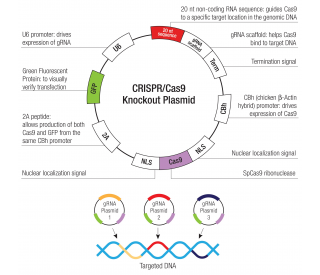Species Reactivity
Human
Specificity
Detects human SR-AI in direct ELISAs and Western blots. In direct ELISAs and Western blots, this antibody does not cross‑react with recombinant mouse SR‑AI.
Source
Monoclonal Mouse IgG 1 Clone # 351620
Purification
Protein A or G purified from hybridoma culture supernatant
Immunogen
Mouse myeloma cell line NS0-derived recombinant human SR-AI
Lys77-Leu451
Accession # P21757Formulation
Lyophilized from a 0.2 μm filtered solution in PBS with Trehalose. *Small pack size (SP) is supplied as a 0.2 µm filtered solution in PBS.
Endotoxin Level
<0.10 EU per 1 μg of the antibody by the LAL method.
Label
Unconjugated
Applications
Recommended
ConcentrationSample
Western Blot
1 µg/mL
Recombinant Human SR-AI/MSR1 (Catalog # )
under non-reducing conditions onlyBlockade of Receptor-ligand Interaction
In a functional ELISA, 0.01 - 0.05 μg/mL of this antibody will block 50% of the binding of 400 ng/mL of biotinylated AGE-BSA to immobilized recombinant human SR-AI chimera coated at 5 μg/mL (100 µL/well). At 2 μg/mL, this antibody will block >90% of the binding.
Please Note: Optimal dilutions should be determined by each laboratory for each application. are available in the Technical Information section on our website.
Preparation and Storage
Reconstitution
Reconstitute at 0.5 mg/mL in sterile PBS.
Shipping
The product is shipped at ambient temperature. Upon receipt, store it immediately at the temperature recommended below. *Small pack size (SP) is shipped with polar packs. Upon receipt, store it immediately at -20 to -70 °C
Stability & Storage
Use a manual defrost freezer and avoid repeated freeze-thaw cycles.
12 months from date of receipt, -20 to -70 °C as supplied.
1 month, 2 to 8 °C under sterile conditions after reconstitution.
6 months, -20 to -70 °C under sterile conditions after reconstitution.
Background: SR-AI/MSR
The type I class A macrophage scavenger receptor (SR-AI; also MSR-AI) is a 70-80 kDa protein that belongs to an ever expanding family of transmembrane molecules collectively referred to as scavenger receptors (1 - 3). Receptors of this family contain characteristic extracellular domains and bind to a series of generally unrelated, but negatively-charged/polyanionic ligands (1, 3). Human SR-AI is a type II transmembrane glycoprotein that is 451 amino acids (aa) in length. It contains a 50 aa cytoplasmic tail, a 26 aa transmembrane segment and a 375 aa extracellular region (4, 5). The extracellular region contains four definitive domains, with a membrane proximal spacer of 33 aa, an alpha -helical coiled-coil domain of 163 aa, a collagen-like domain of 69 aa, and a cysteine-rich C-terminus of 110 aa (4, 6). The cysteine-rich domain (CRD) forms three intrachain disulfide bonds (7). The functional form of the molecule is a 220 - 230 kDa membrane-associated trimer that, in human, apparently has two disulfide bonded chains and a third noncovalently associated subunit (8, 9). Human extracellular region is 73% and 72% aa identical to bovine and mouse SR-AI extracellular region, respectively. The human gene for SR-A gives rise to three isoforms; the I isoform of 451 aa, the II isoform of 358 aa, and the III isoform of 388 aa (4, 5, 10). All are equal through the first 344 aa which includes the cytoplasmic tail through the collagenous domain. Isoform II (SR-AII) shows a severe truncation of the CRD, but is expressed on the cell surface. Isoform III (SR-AIII) has a modest truncation of the CRD, and cannot be expressed on the cell surface. Their functions are unknown. However, relative to SR-AI, SR-AII is known to show differential sensitivity to LPS and receptor binding to gram-negative bacteria (9, 11), while SR-AIII is known to be a dominant-negative isoform (10). SR-AIII may achieve this by either heterotrimerizing with SR-AI, or simply eliminating the production of SR-AI mRNA.
References:
Platt, N. and S. Gordon (2001) J. Clin. Invest. 108:649.
Linton, M.F. and S. Fazio (2001) Curr. Opin. Lipidol. 12:489.
Platt, N. and S. Gordon (1998) Chem. Biol. 5:R193.
Matsumoto, A. et al. (1990) Proc. Natl. Acad. Sci. USA 87:9133.
Emi, M. et al. (1993) J. Biol. Chem. 268:2120.
Naito, M. et al. (1992) Am. J. Pathol. 141:591.
Resnick, D. et al. (1996) J. Biol. Chem. 271:26924.
Ashkenas, J. et al. (1993) J. Lipid Res. 34:983.
Penman, M. et al. (1991) J. Biol. Chem. 266:23985.
Gough, P.J. et al. (1998) J. Lipid Res. 39:531.
Peiser, L. et al. (2000) Inf. Immun. 68:1953.
Long Name:
Macrophage Scavenger Receptor Types I and II
Entrez Gene IDs:
4481 (Human); 20288 (Mouse); 25073 (Rat)
Alternate Names:
CD204 antigen; CD204; Macrophage acetylated LDL receptor I and II; macrophage scavenger receptor 1; macrophage scavenger receptor type III; MSR1; phSR1; phSR2; SCARA1; SCARA1macrophage scavenger receptor types I and II; Scavenger receptor class A member 1; scavenger receptor class A, member 1; SR-A; SRAI; SR-AI










